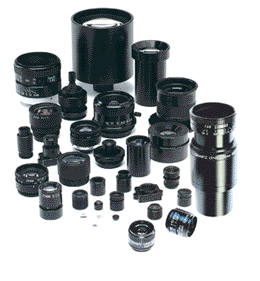High resolution lenses for machine vision — standard and custom lens design
The Benefits Of Blue Filters
High Resolution Lenses for machine vision, instrumentation, inspection and vibration-sensitive applications. Standard and custom hi-res lens assemblies.

Blue Filters
Scientists and researchers that work with microscopes on a regular basis understand the benefits of blue filter mechanisms. A microscope that utilizes a tungsten filament lamp (including halogen lamps) have a propensity toward the lamp changing the color temperature of an item being viewed.
Using LED lamps that do not have a tendency to change their color also means there is not a light-intensity related color shift in the specimen. Lamp intensity at low levels show a color on the red spectrum while high intensity lighting changes the color of the specimen to blue; either of these changes can lead to a significant color shift in the item on the slide and can change the items being projected into a micrograph. The color changes mean the micrographs could have a yellow tinge if the light is at low intensity while brighter intensities lead to a more natural color hue.
The placement of a blue filter over the lamp will absorb reds in the spectrum and will offer a more neutral, cooler color. With the use of a blue filter, researchers will no longer have to correct the color temperature of a picture with the white balance tool found in image editing programs.
When shopping for a microscope, look for one that has a swing-in blue filter that is housed under the condenser. It isn’t necessary to have a separate blue filter mechanism although they are available on the market for those microscopes that do not have the capability to adapt to a swing-in filter.
Many digital technologies, such as cameras and even some microscopes have a blue filter built into the sensor which means photos can be taken without worry about color distortion.